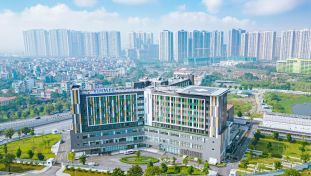When global trade dynamics intersect with technological dependence, the semiconductor industry stands at the center of both economic strategy and national security. As tariffs and export restrictions continue to reshape global trade patterns, semiconductor companies are realizing that resilience, not cost alone, must define the next generation of supply chain strategy.
"Supply chains can no longer be optimized solely for efficiency," says Umesh Sharma, a global supply chain transformation leader. "They must be designed for adaptability, redundancy, and intelligence in an environment where tariffs and policy changes have become constant variables."
The Tariff Era: From Cost Optimization to Risk Management
For decades, chipmakers optimized for cost and speed, relying heavily on geographically concentrated production, often in East Asia, for advanced nodes and critical subcomponents. But escalating tariffs, export bans, and regional subsidies have exposed the fragility of this model.
What began as a cost war has evolved into a strategic competition, with semiconductor ecosystems now shaped by policy incentives like the U.S. CHIPS and Science Act, Europe's IPCEI program, and Japan's and India's subsidy frameworks.
"Tariffs are no longer temporary disruptions," Sharma explains. "They're structural signals that every enterprise must factor into long-term design. The question is not how to avoid tariffs, but how to architect around them."
Five Pillars of a Resilient Semiconductor Supply Chain
To thrive in this new era, organizations must move from reactive adjustments to strategic foresight. Sharma outlines five foundational pillars that define resilient semiconductor supply chains:
1. Multi-Regional Sourcing and Supplier Diversification
No single region can guarantee an uninterrupted supply. Strategic sourcing now means balancing high-cost but secure regions (like the U.S. and Europe) with high-volume, cost-efficient hubs (like Taiwan, Korea, and Southeast Asia). Dual and multi-sourcing strategies ensure continuity when geopolitical or tariff shocks arise.
2. Predictive Visibility and Digital Twins
Advanced analytics, AI, and digital twins are transforming how companies anticipate disruptions. By simulating "what-if" tariff scenarios, firms can forecast the impact of policy changes before they occur, mitigating risk across suppliers, logistics, and inventory networks.
This aligns with earlier work on digital twins in operations, such as Sharma's perspective in Forbes on how real-time simulation can transform supply chain operations.
In that article, Sharma noted that companies adopting AI-driven digital twin simulations improved operational efficiency by nearly 20% and reduced inventory imbalances by up to 15%, underscoring the measurable impact of predictive visibility on resilience.
3. Flexible Contracting and Capacity Sharing
Long-term fixed contracts, once the backbone of semiconductor sourcing, now limit agility. Firms are adopting flexible clauses, capacity leasing, fallback rights, and rapid renegotiation windows to shift production when tariffs or regional priorities change.
4. Localized Assembly and Packaging Hubs
To balance cost with compliance, manufacturers are expanding assembly, packaging, and testing (APT) capabilities closer to demand centers. This "near-shoring" model reduces tariff exposure while supporting government incentives for local value creation.
5. Sustainability and Policy Alignment
Resilient supply chains also align with environmental, social, and governance (ESG) imperatives. Sustainable sourcing and transparent material traceability aren't just ethical goals; they're increasingly prerequisites for trade compliance and partner eligibility.
Strategic Resilience: Lessons from the Automotive and Chip Crises
The semiconductor shortages of 2020–2022 exposed the systemic risks of hyper-optimized, single-sourced supply models. Automotive OEMs, unable to secure critical microcontrollers, halted production lines worth billions.
"Those disruptions taught industries that resilience pays for itself," Sharma observes. "Enterprises that had invested in flexible sourcing, digital scenario modeling, and regional diversification recovered far faster."
In fact, those lessons echo arguments made in an IBTimes feature on workforce development, CHIPS, and supply chain resilience in the U.S. semiconductor sector.
That piece highlighted how the U.S. CHIPS and Science Act unlocked $52 billion in federal incentives for domestic semiconductor production and R&D, with projections that the initiative could create over 42,000 new high-tech jobs and reduce dependency on overseas fabs by nearly 25% by 2030, numbers that quantify how policy-driven investment can fortify national and global resilience simultaneously.
This insight now defines semiconductor strategy across the value chain, from wafer fabrication to backend assembly. Companies that treat tariff management as a design principle rather than a constraint will lead the next phase of global manufacturing competitiveness.
Redefining Leadership in the Global Semiconductor Network
Building resilient supply chains requires not just capital, but strategic alignment between business, technology, and policy. As Sharma explains, "True resilience is achieved when supply networks can flex dynamically to market, tariff, or environmental shifts without eroding profitability or innovation velocity."
Industry leaders are now developing data-driven resilience frameworks that integrate supply chain control towers, AI-based forecasting, and synchronized planning platforms to manage volatility across global ecosystems.
The Road Ahead: Toward Smarter, More Connected Supply Networks
As nations compete for semiconductor sovereignty, the industry faces a paradox: greater fragmentation, yet deeper interdependence. Building resilience will require a collaborative mindset, where governments, technology providers, and manufacturers work together to create cross-border supply visibility and policy stability.
"Resilience is not isolation," Sharma concludes. "It's intelligent interdependence, where companies build flexible, transparent ecosystems that can withstand tariffs, policy changes, and market shocks alike."
The semiconductor industry's next competitive advantage will not come from the cheapest wafer or fastest throughput, but from the smartest and most resilient supply chain architecture. As the world moves beyond tariffs into an age of strategic interdependence, leaders like Umesh Sharma are helping shape a future where semiconductor supply chains are not just global but intelligently adaptive, sustainable, and secure.
Umesh Sharma is a global supply chain transformation leader specializing in semiconductor and high-tech industries. He has led large-scale digital planning initiatives using SAP and AI to build resilient, future-ready supply networks worldwide.
© 2025 ScienceTimes.com All rights reserved. Do not reproduce without permission. The window to the world of Science Times.











